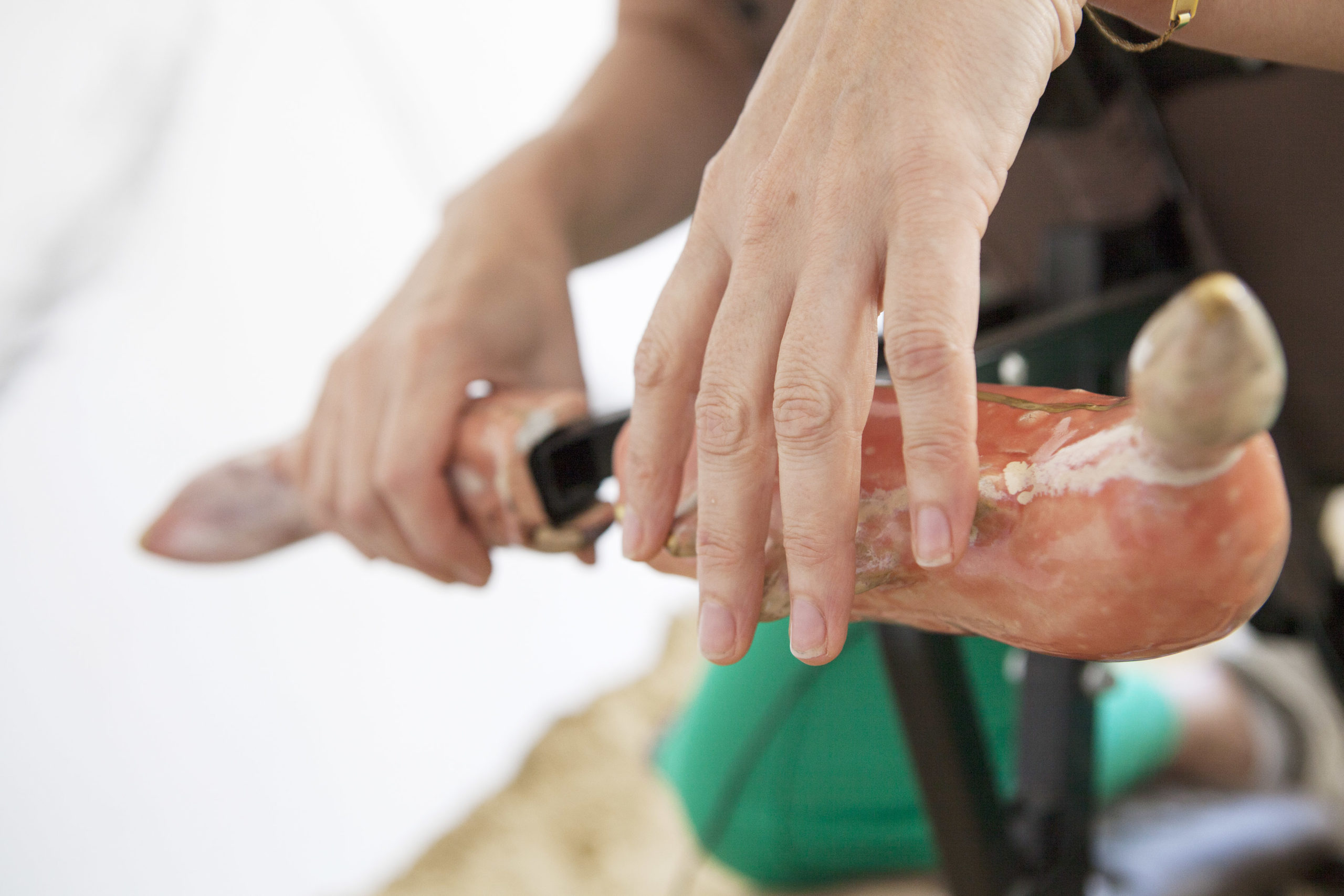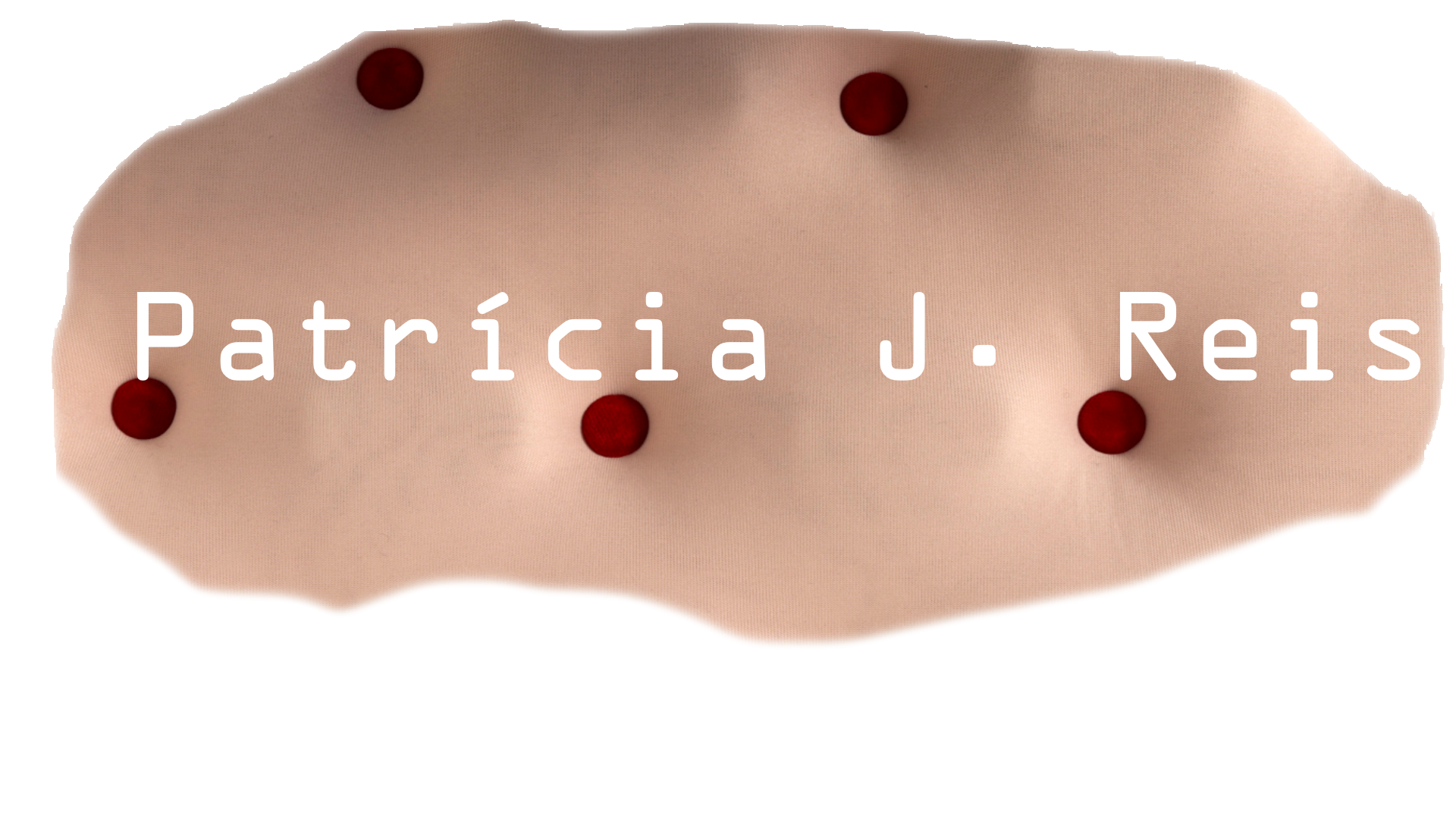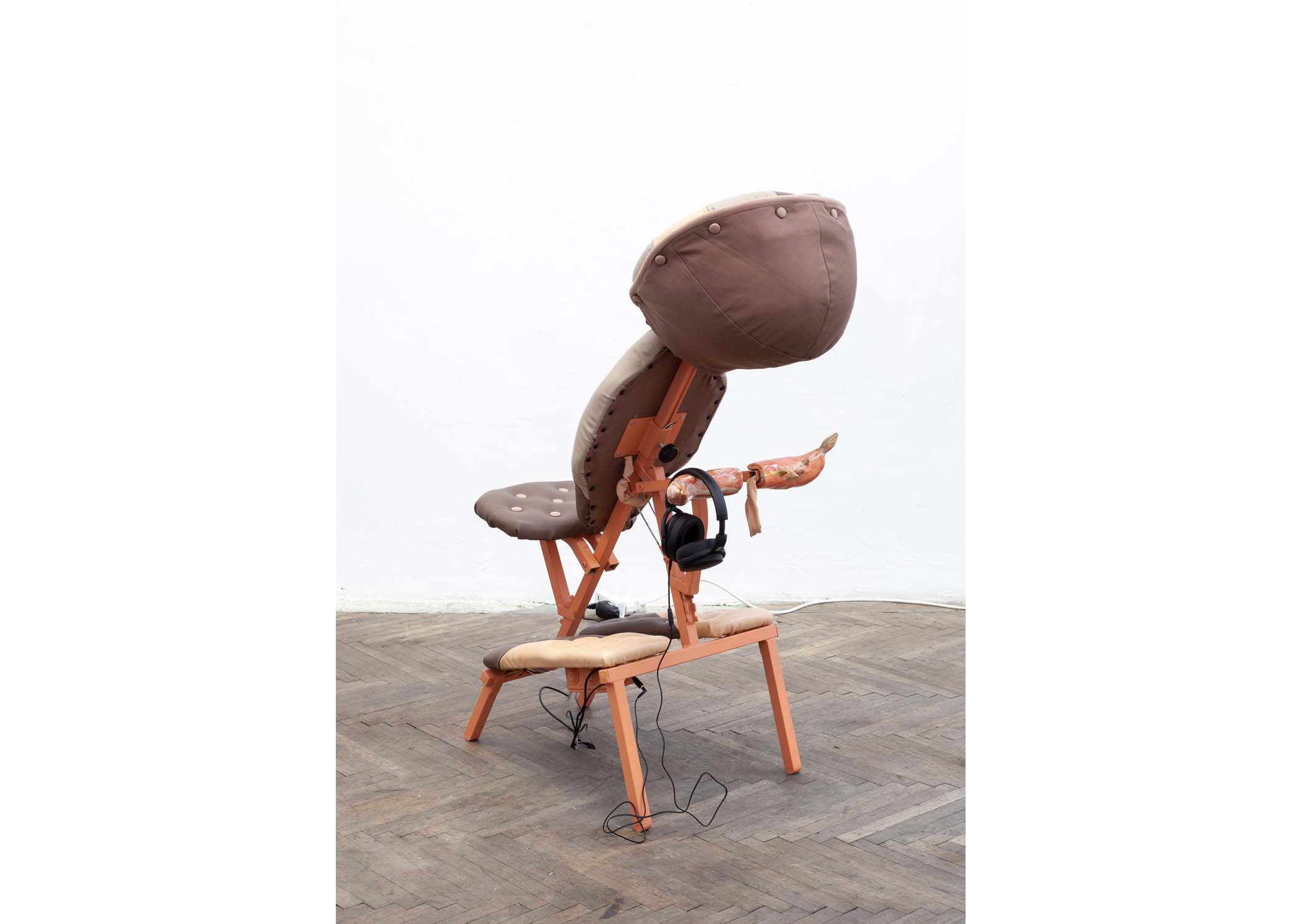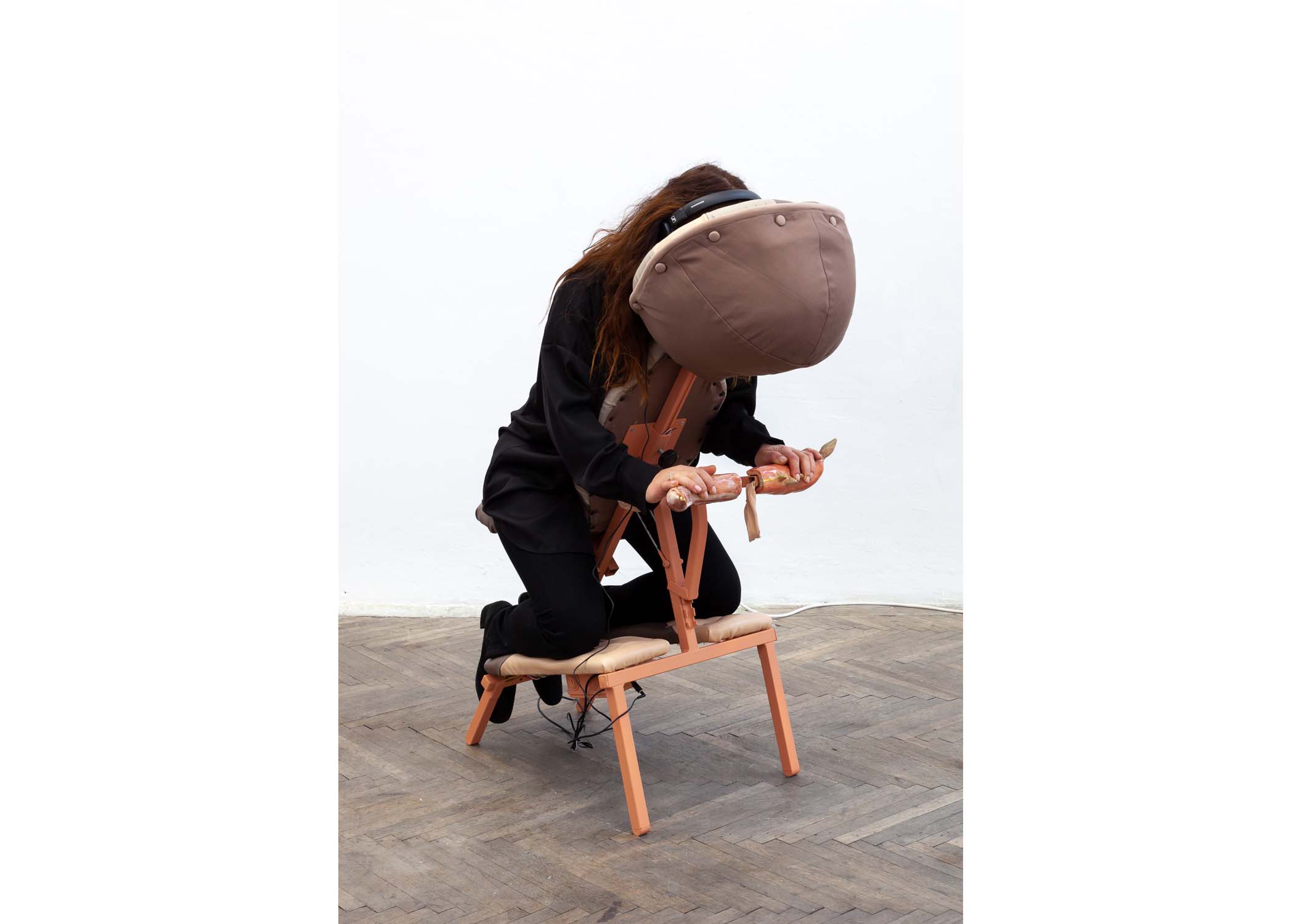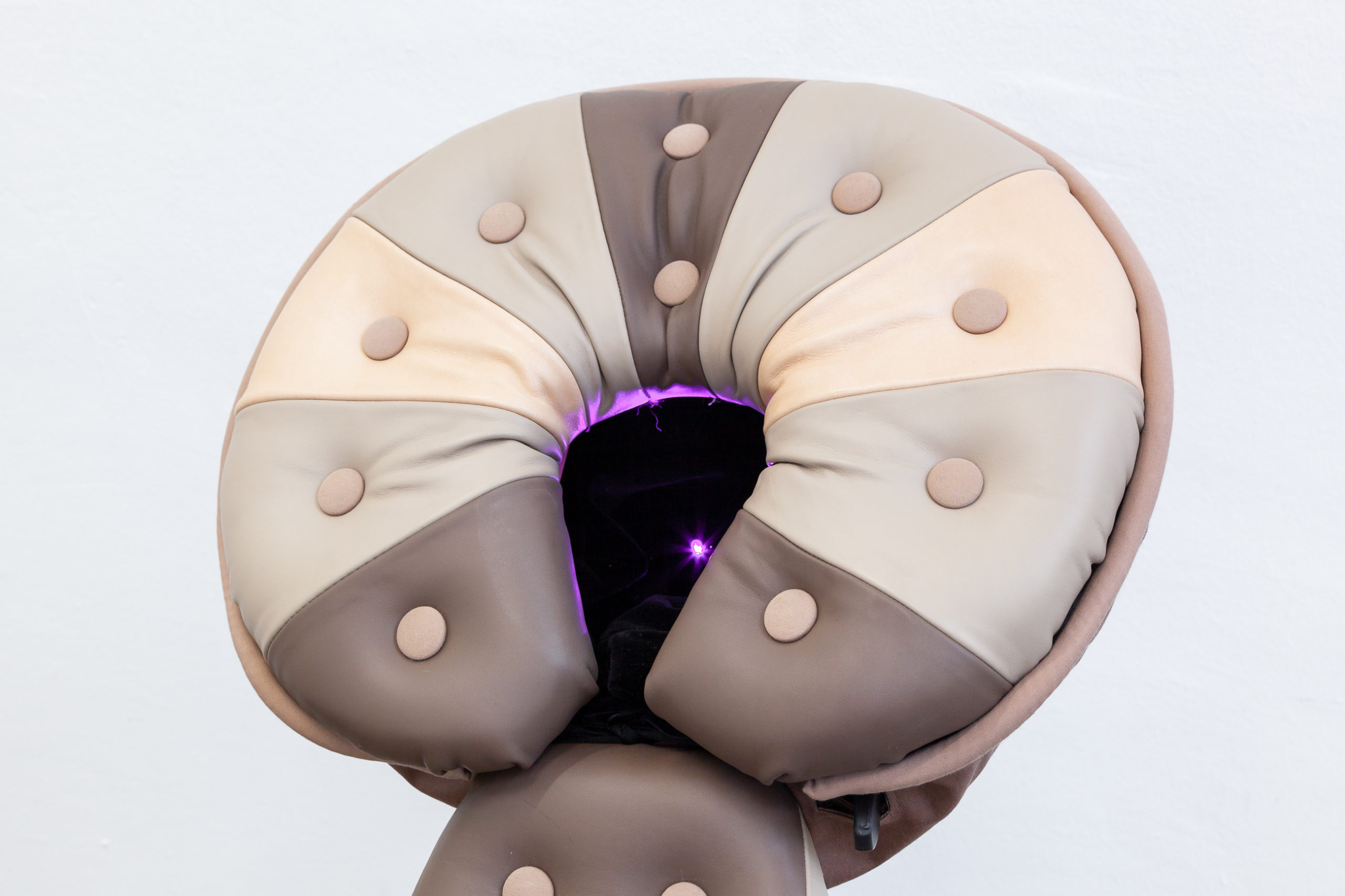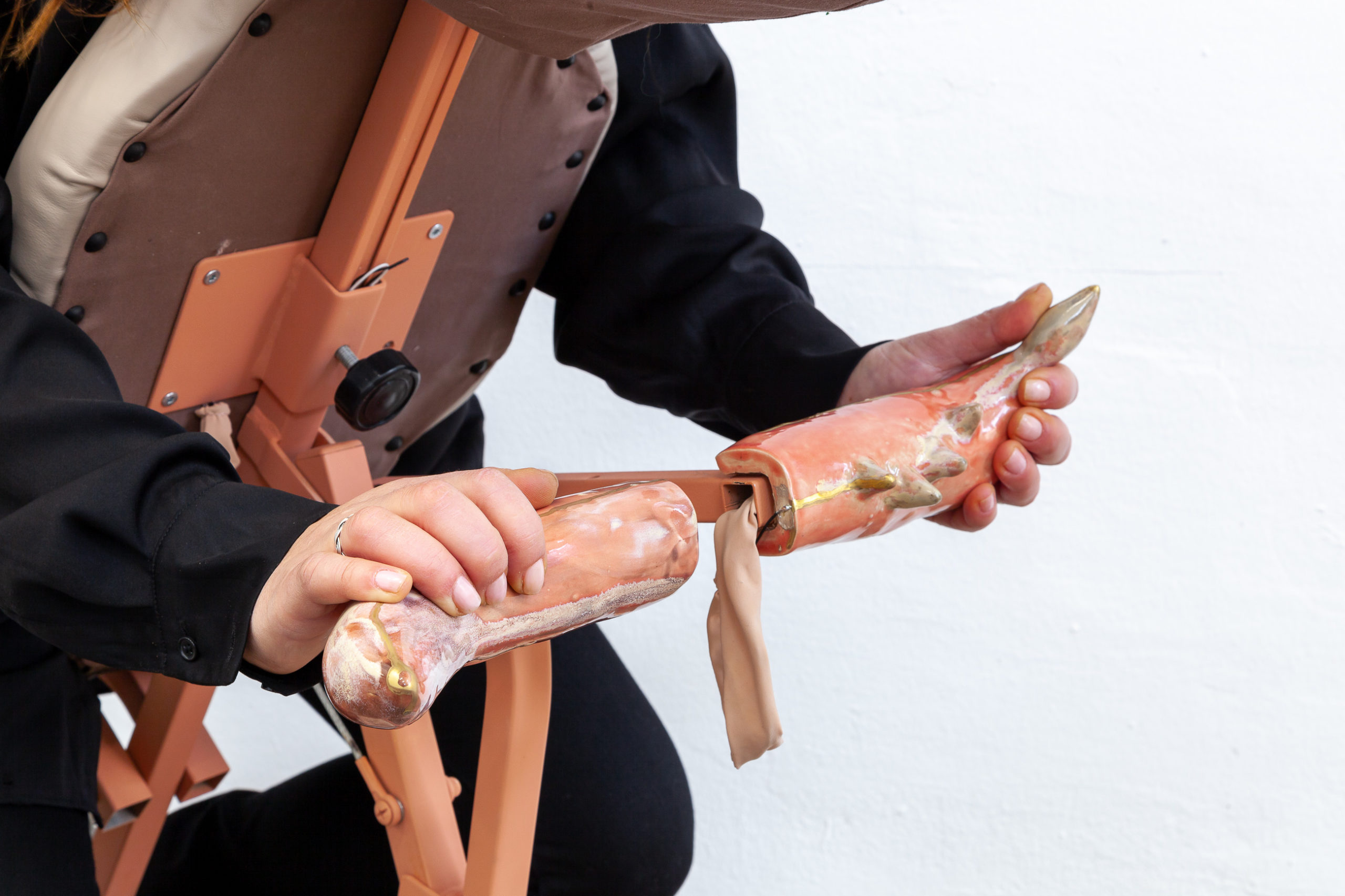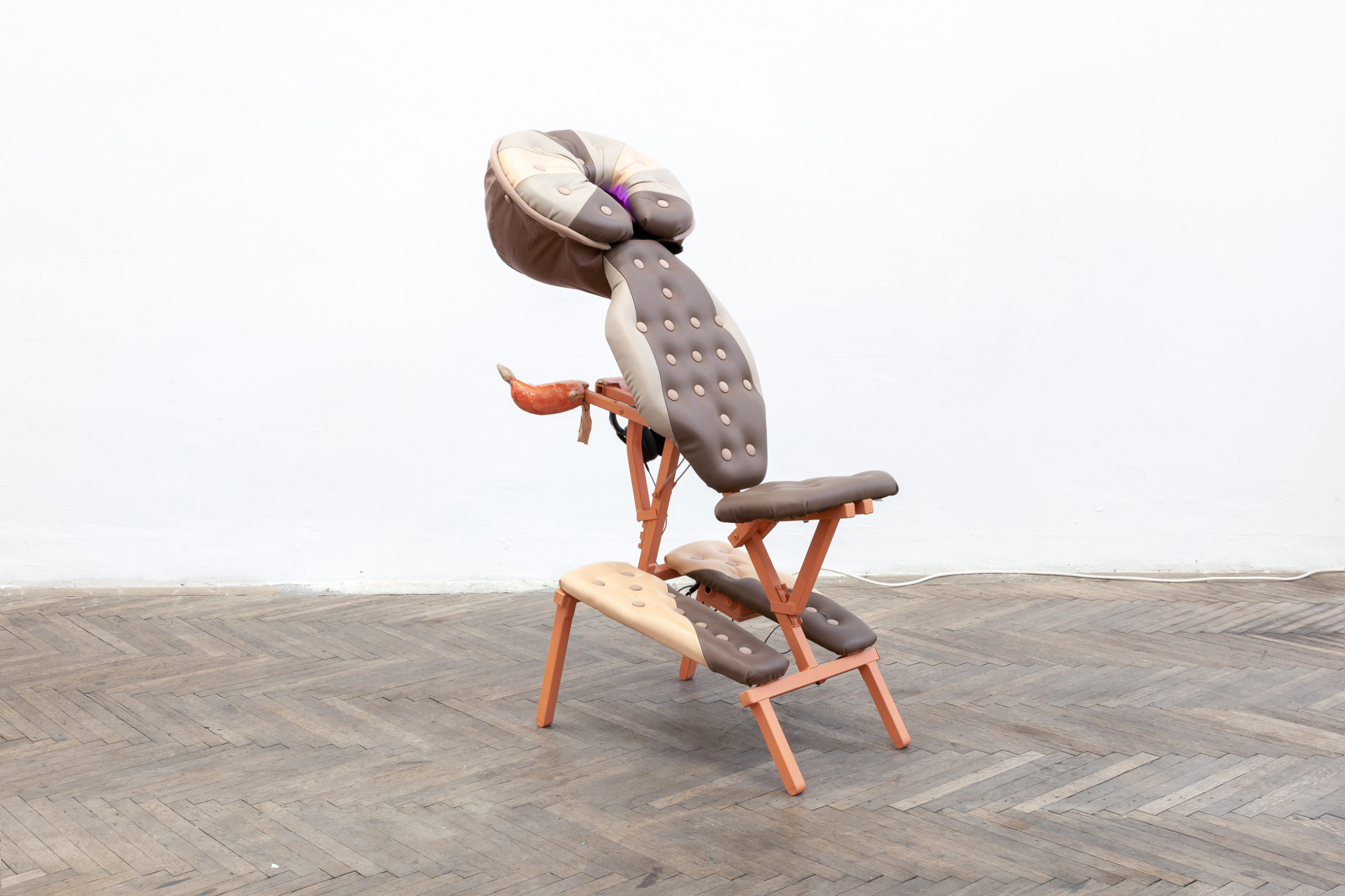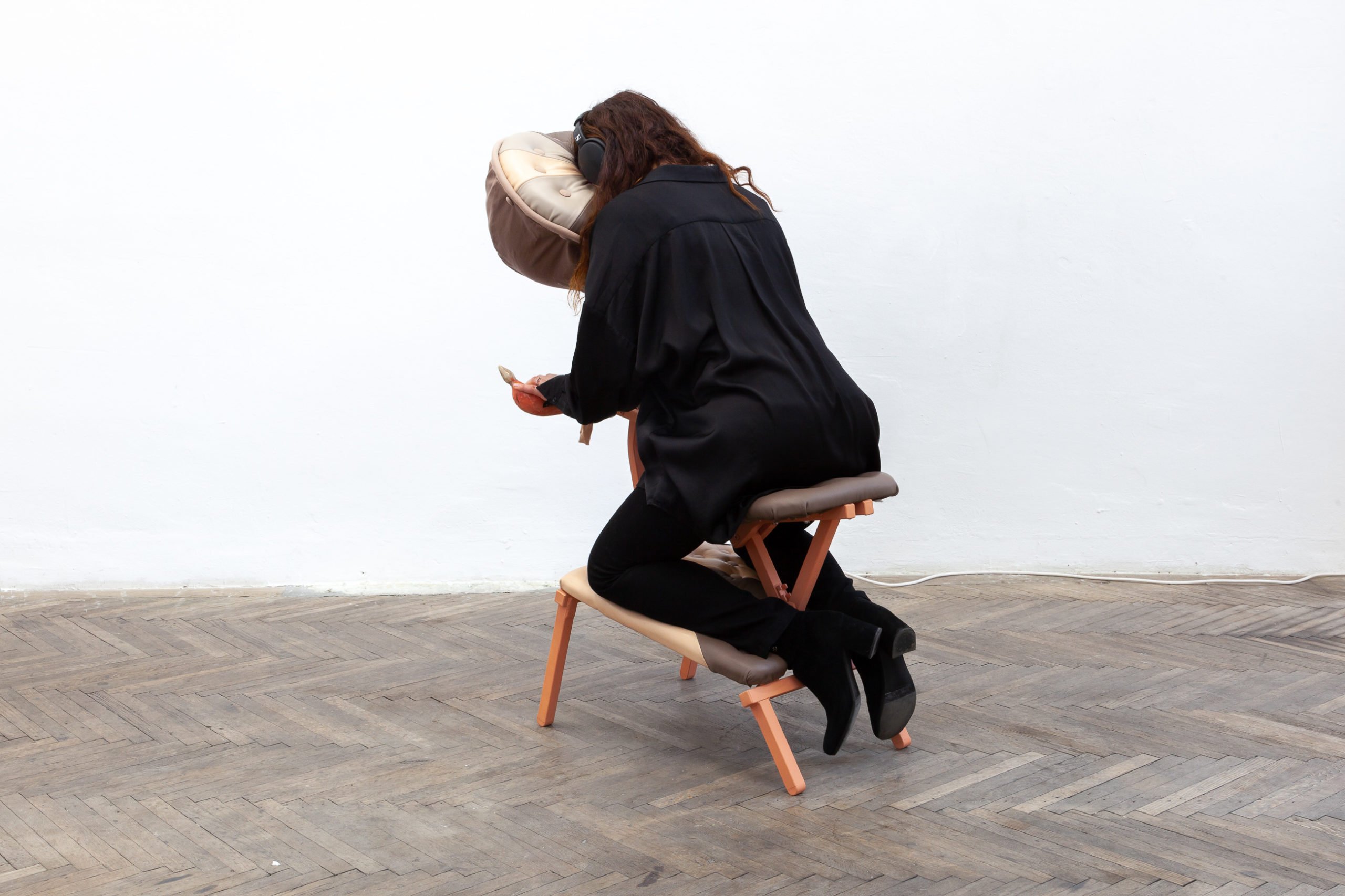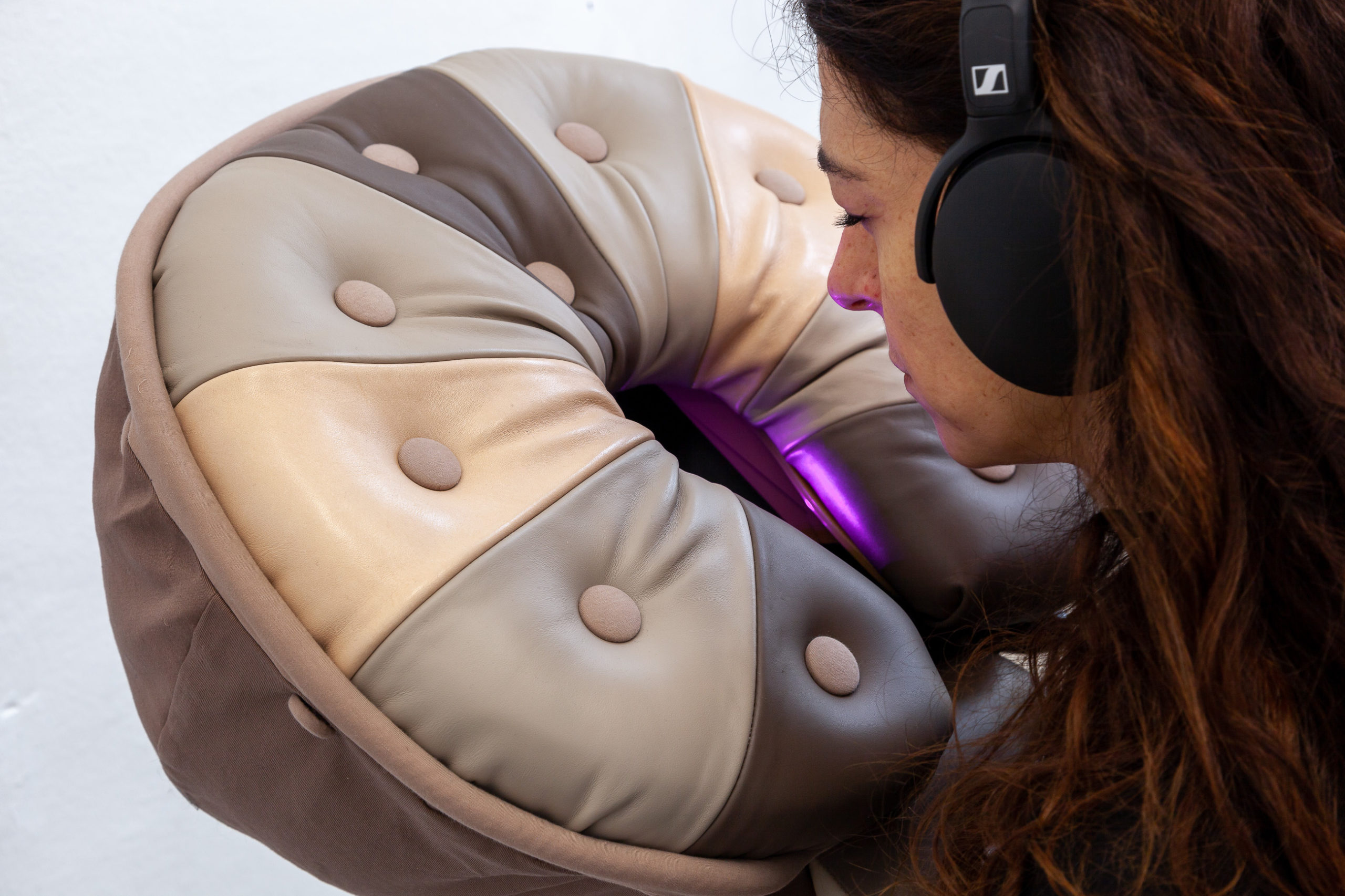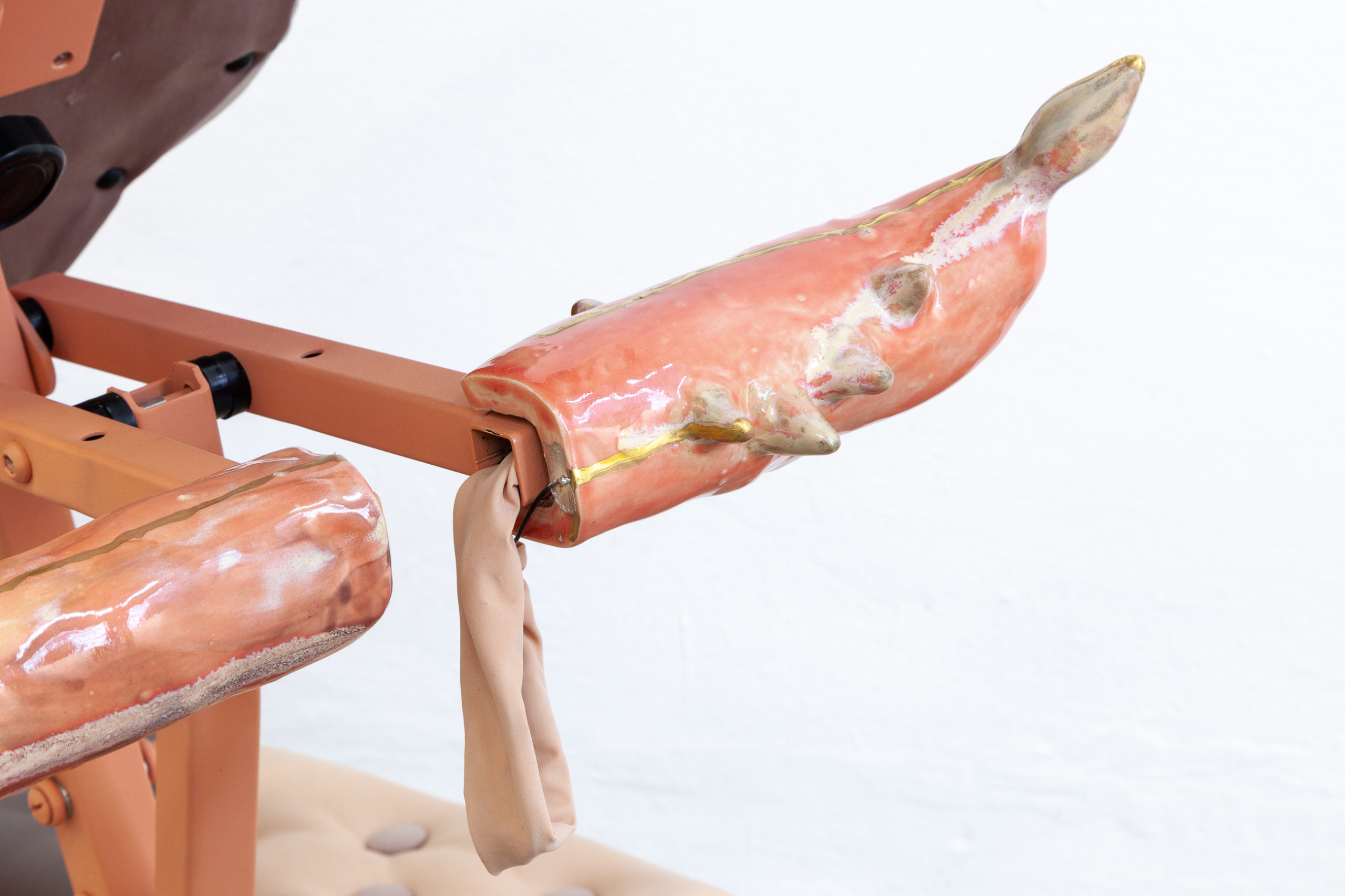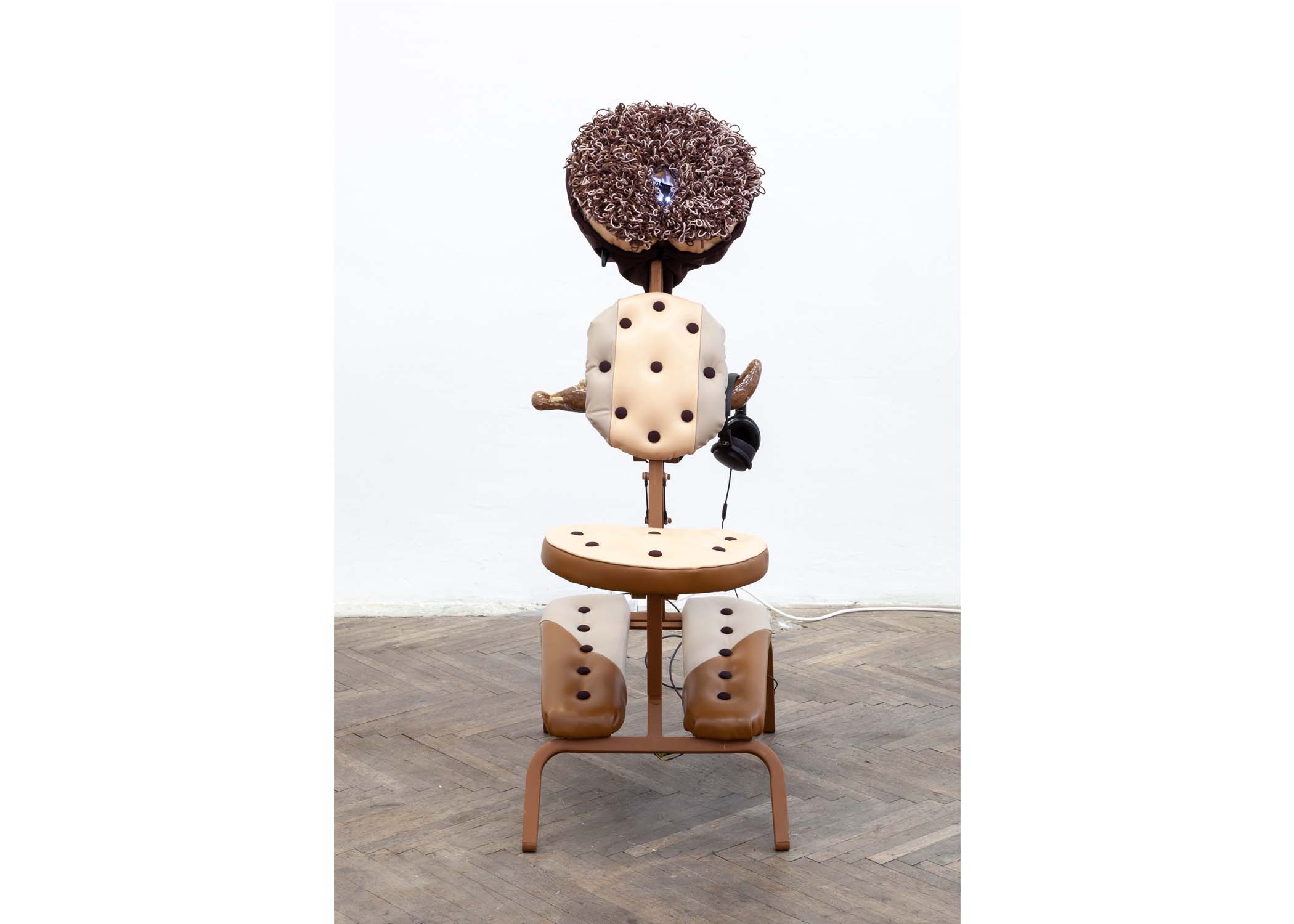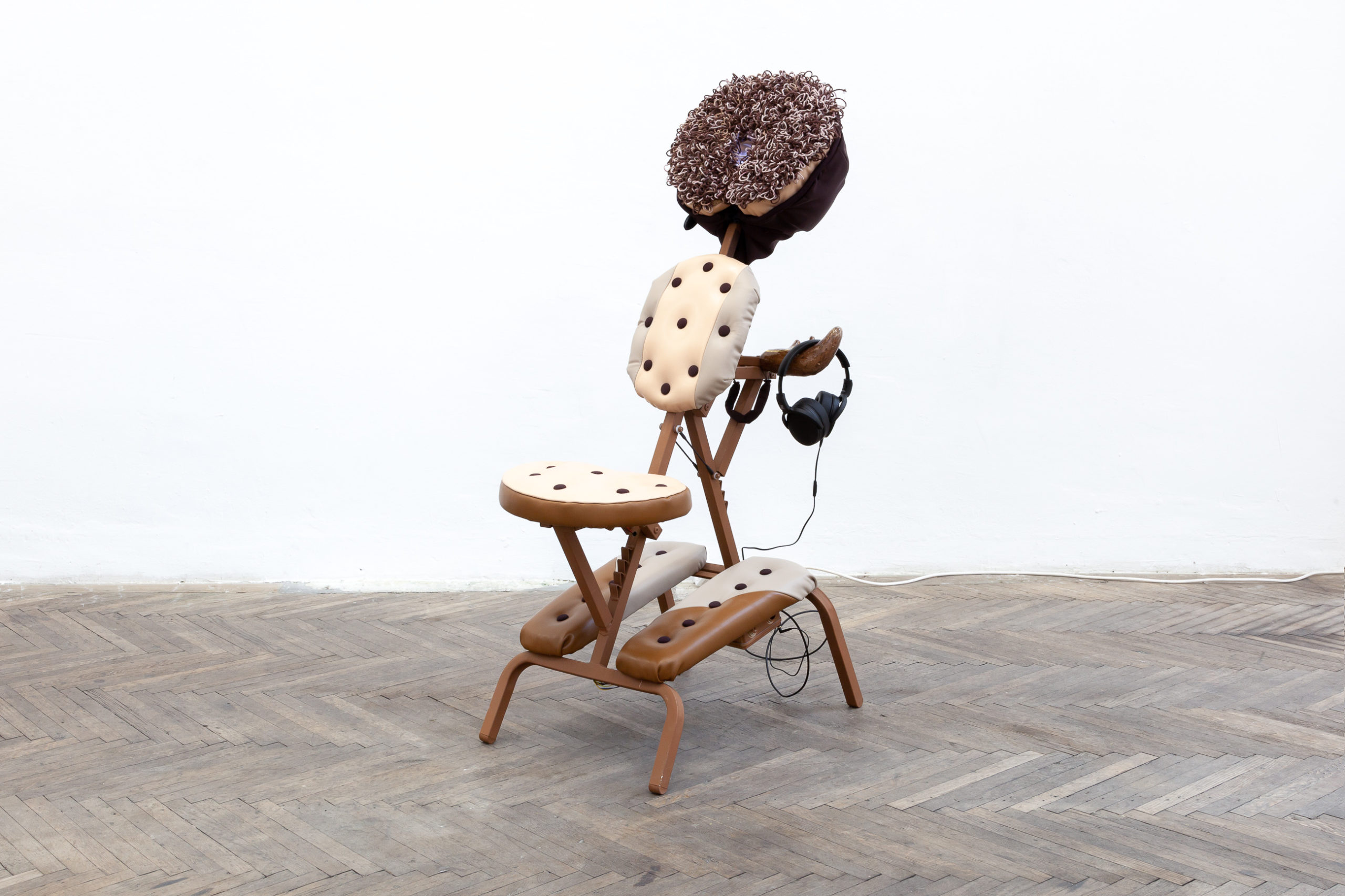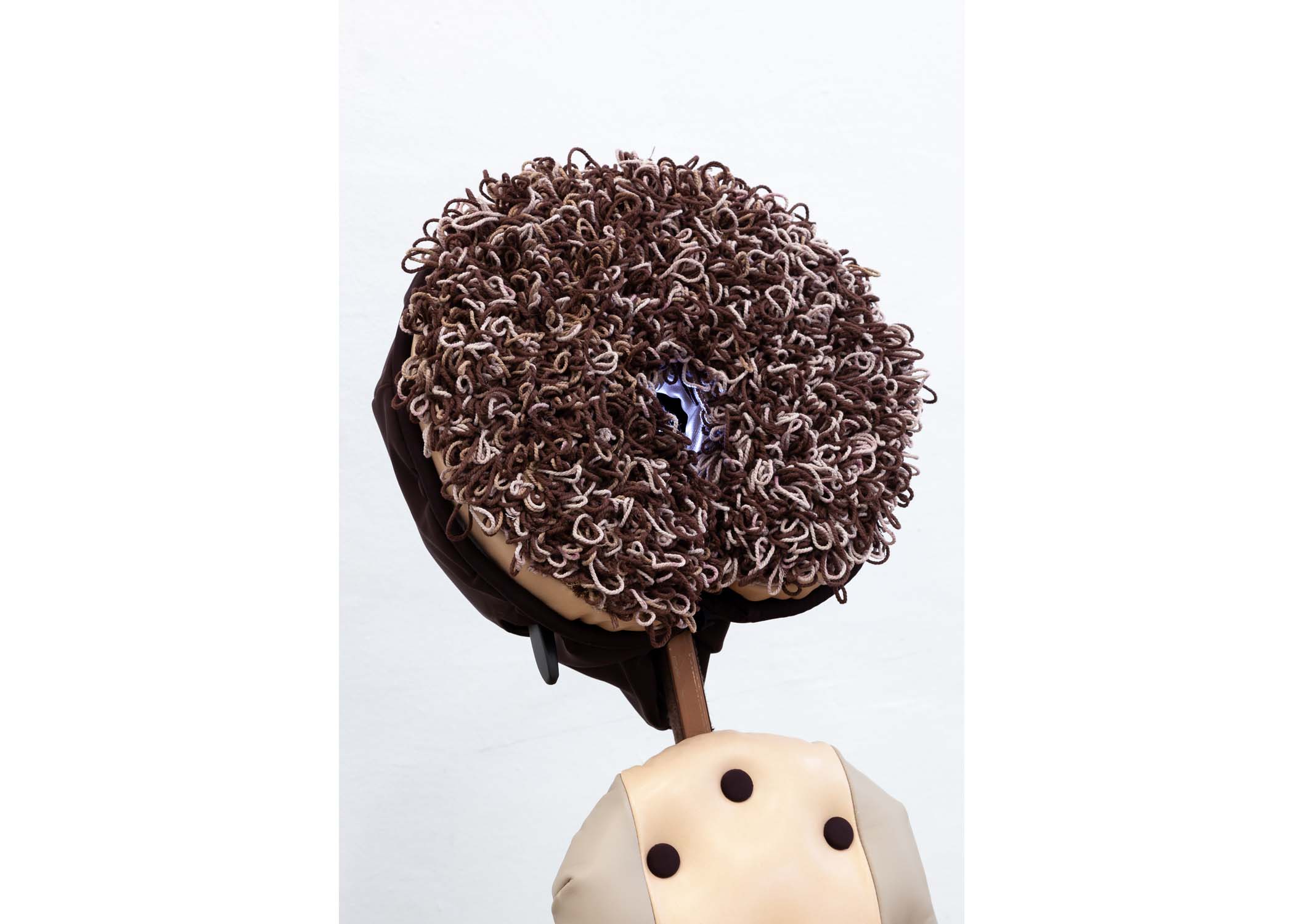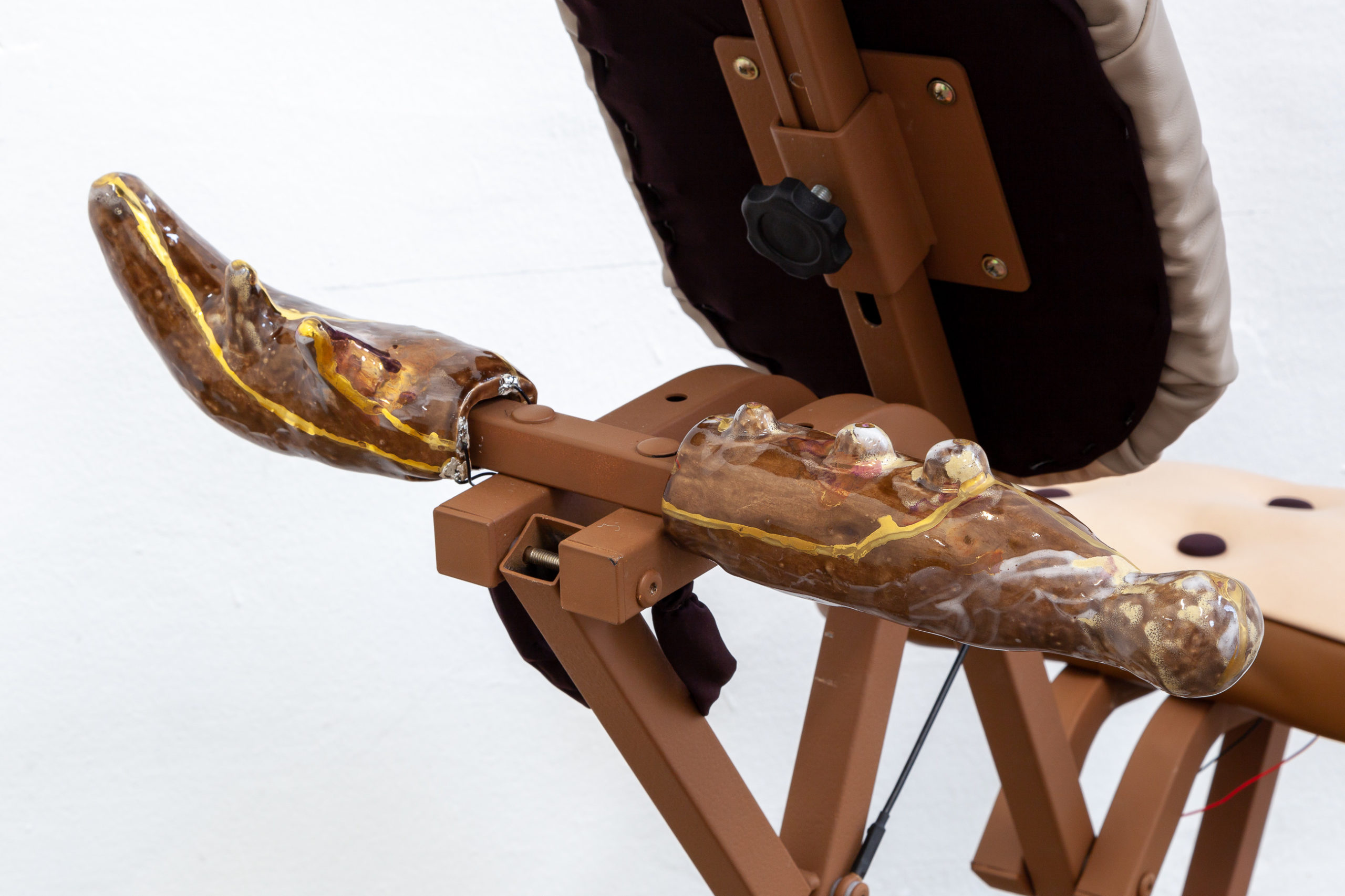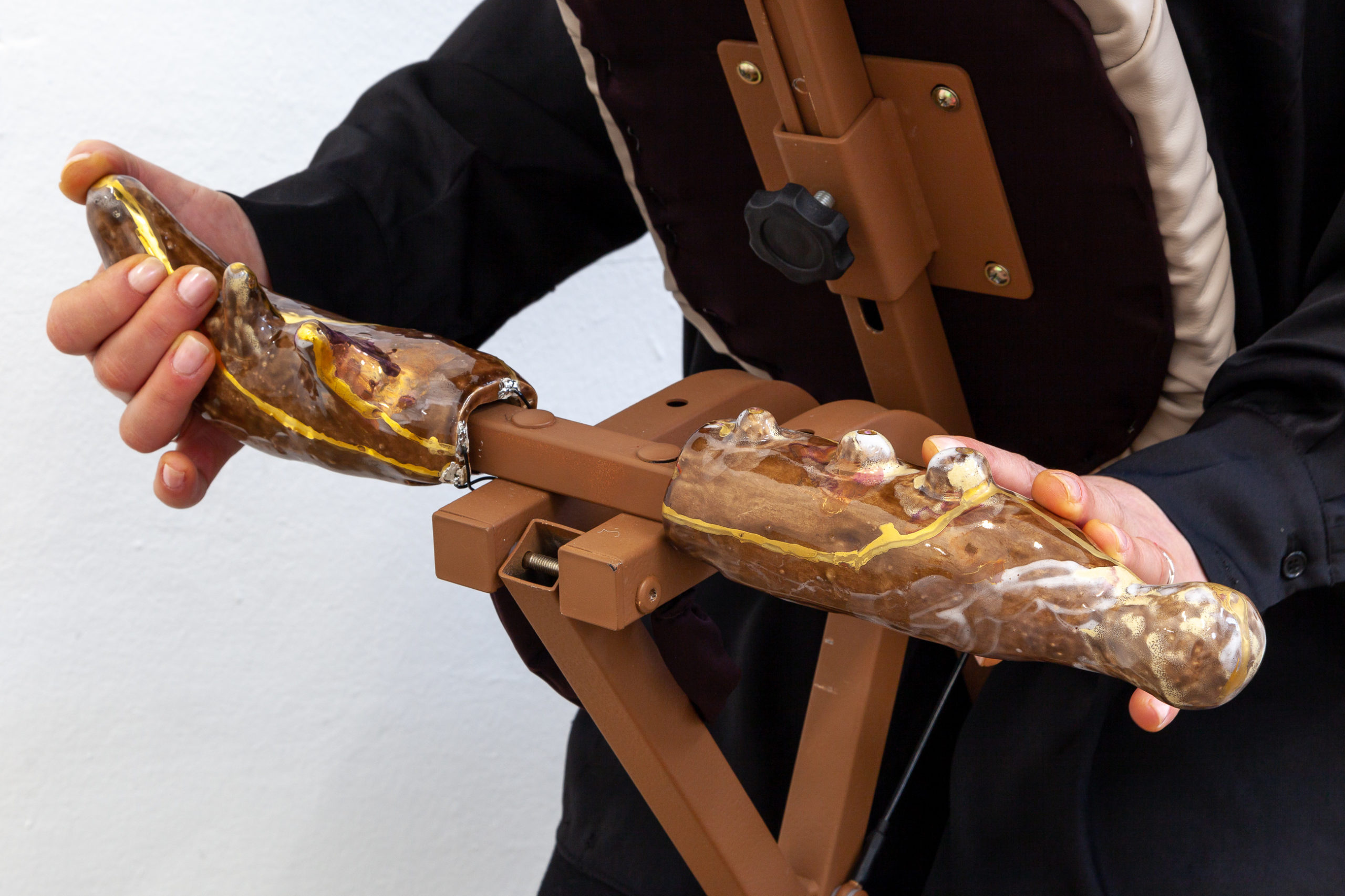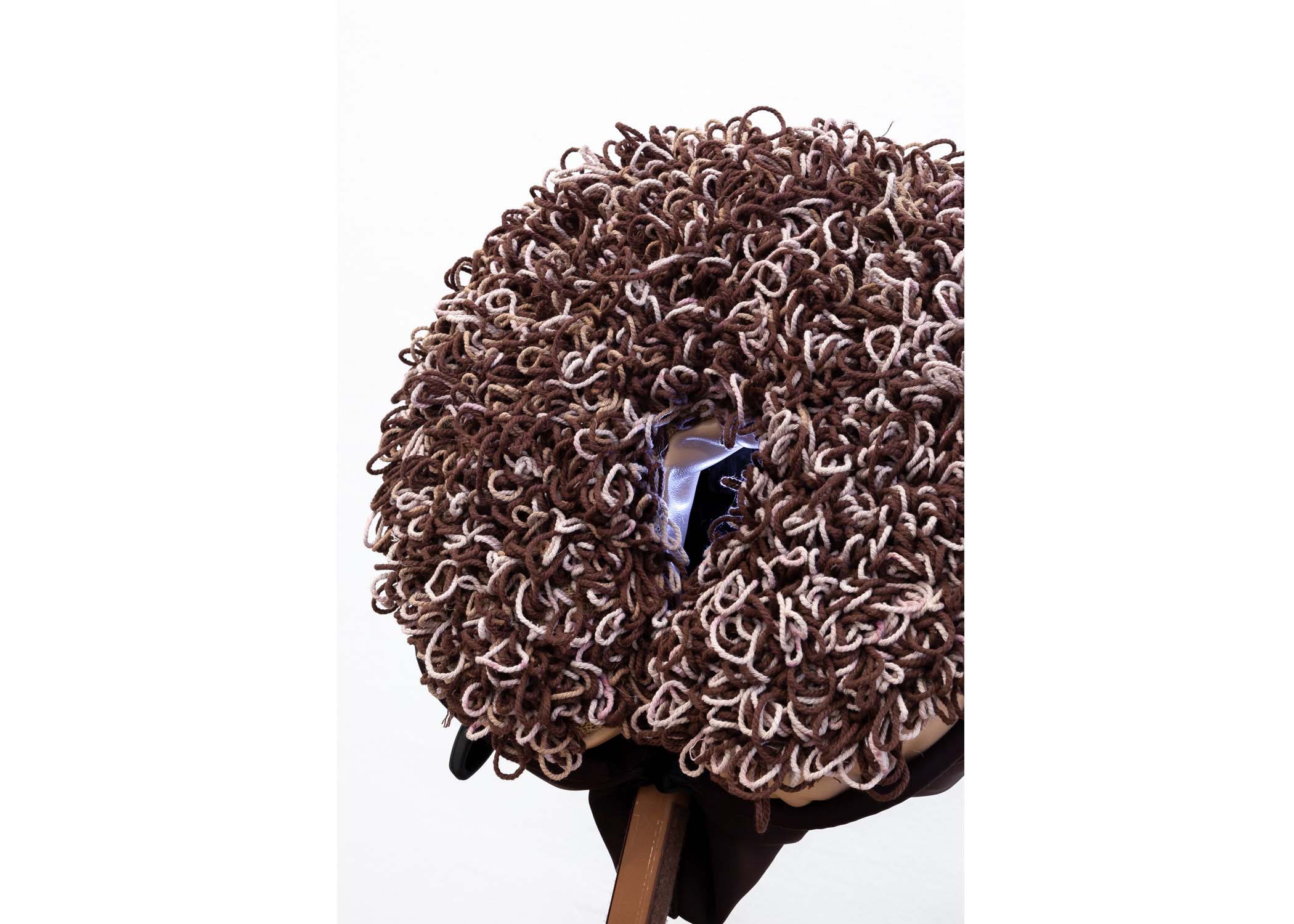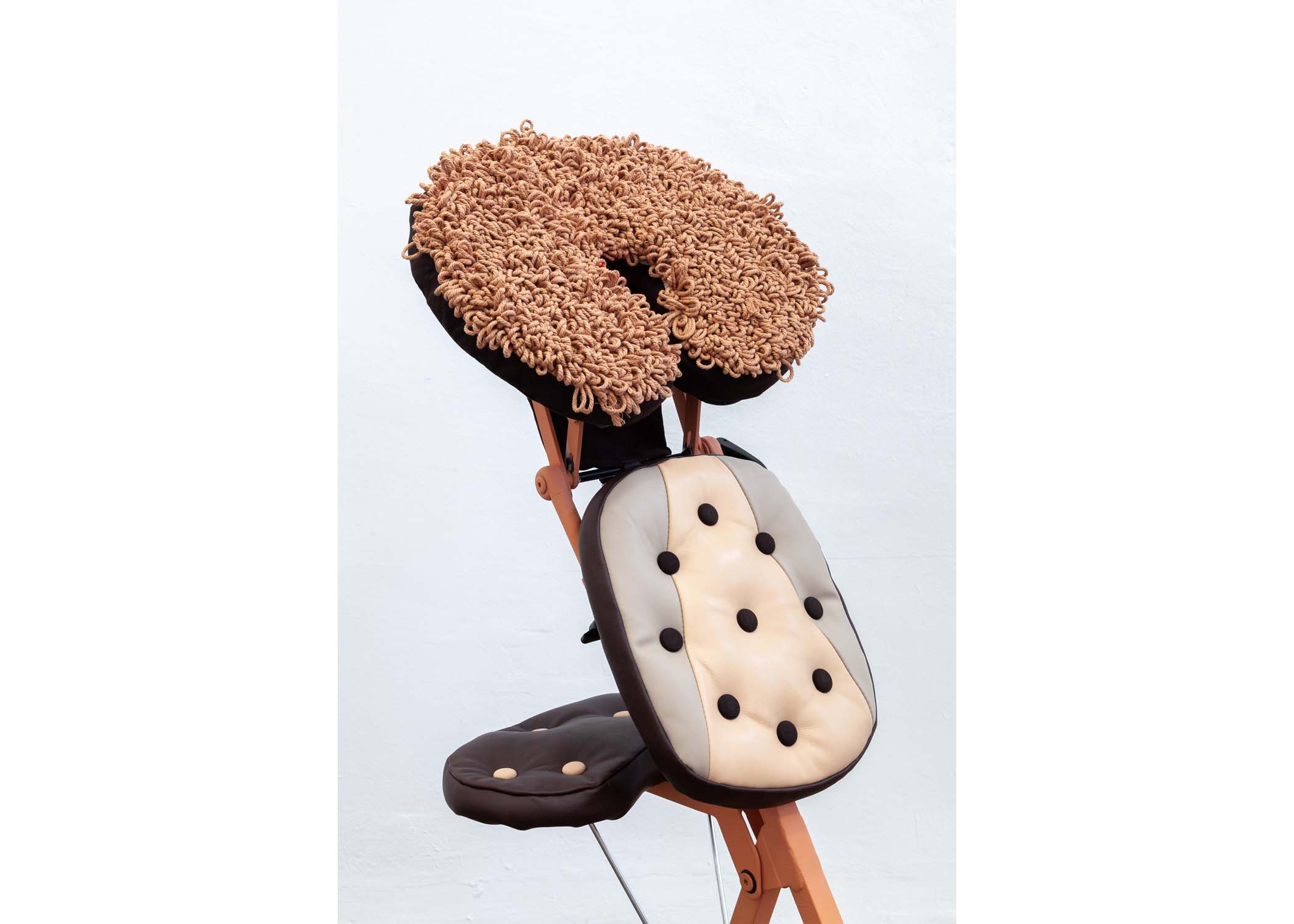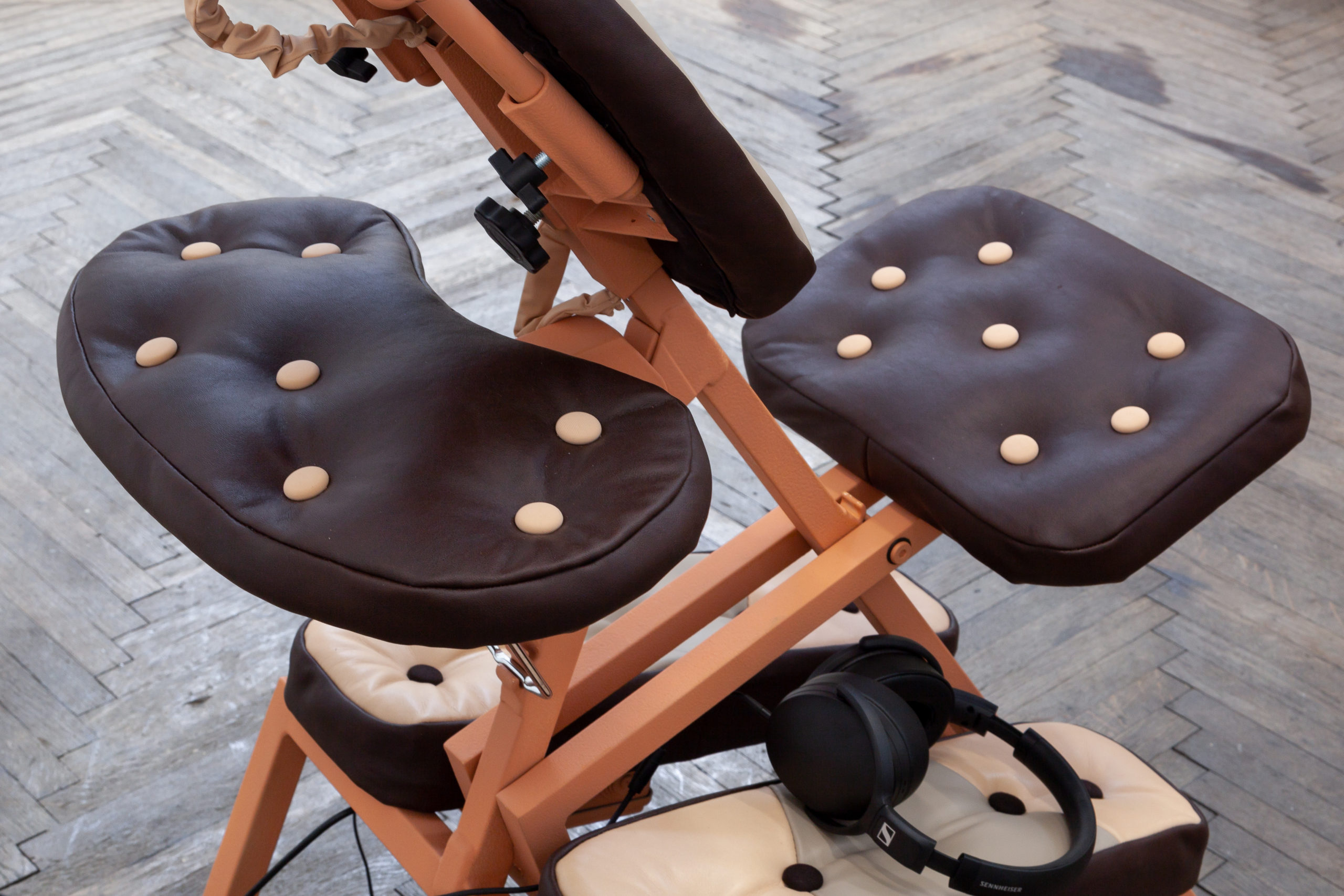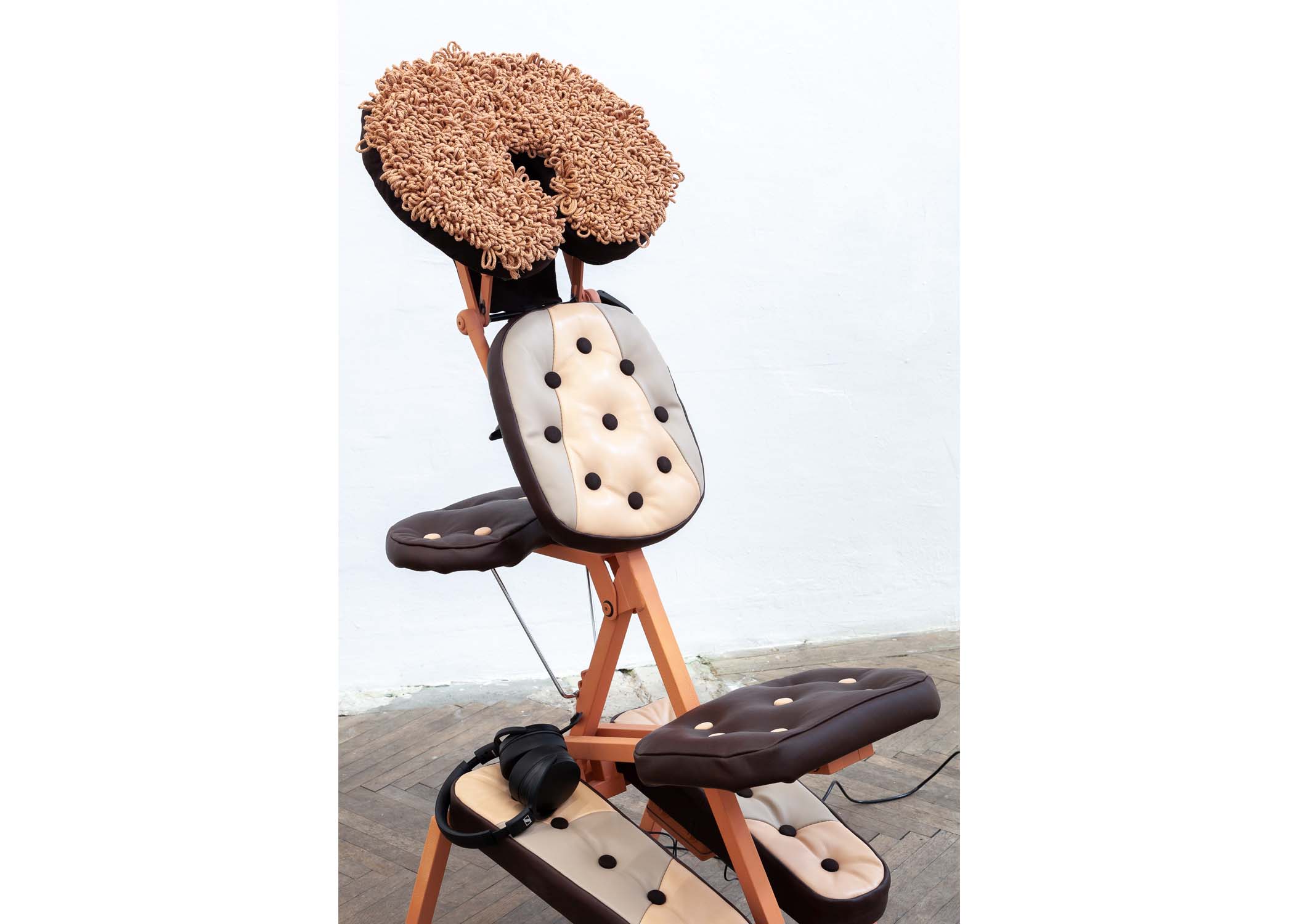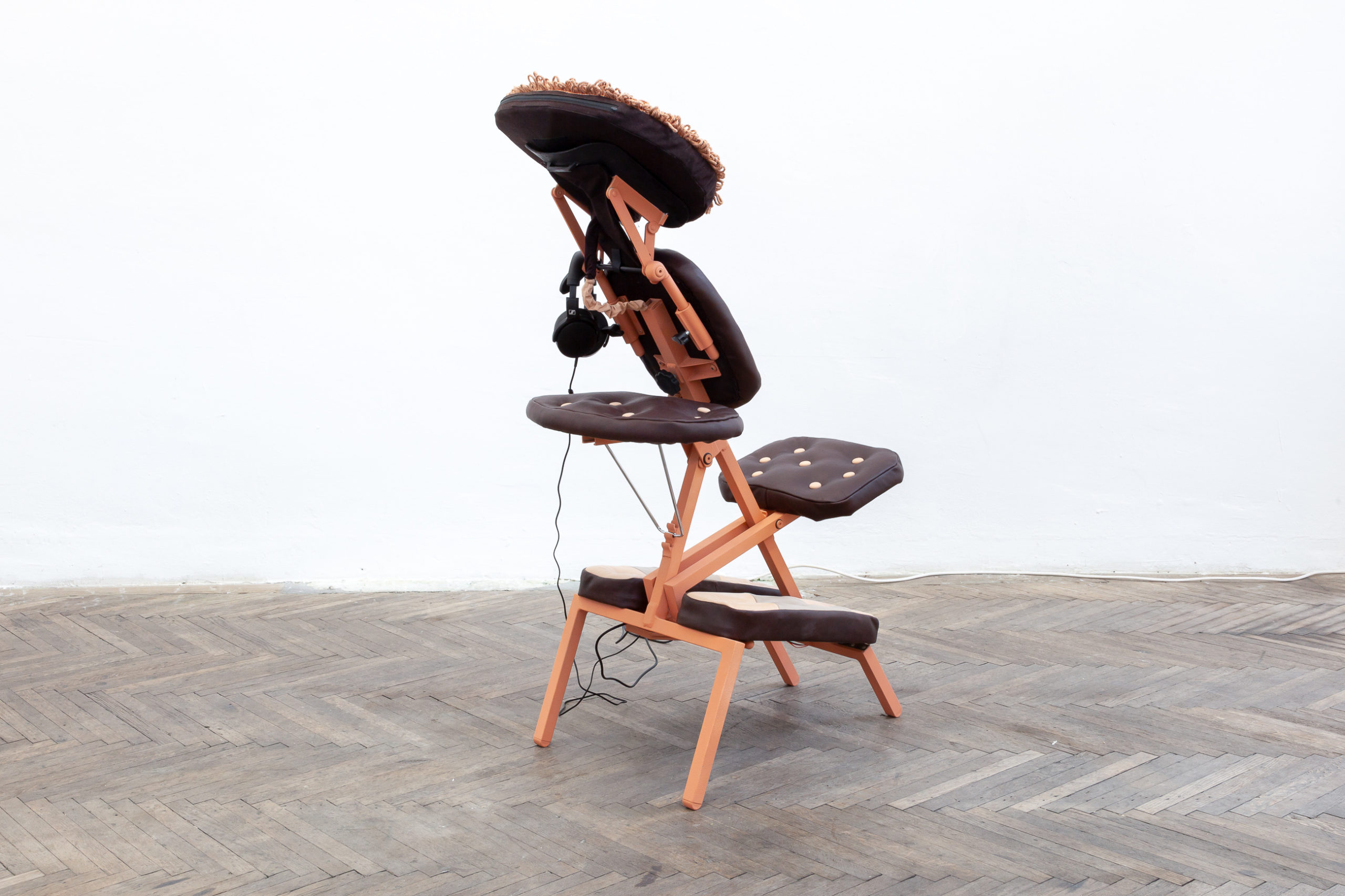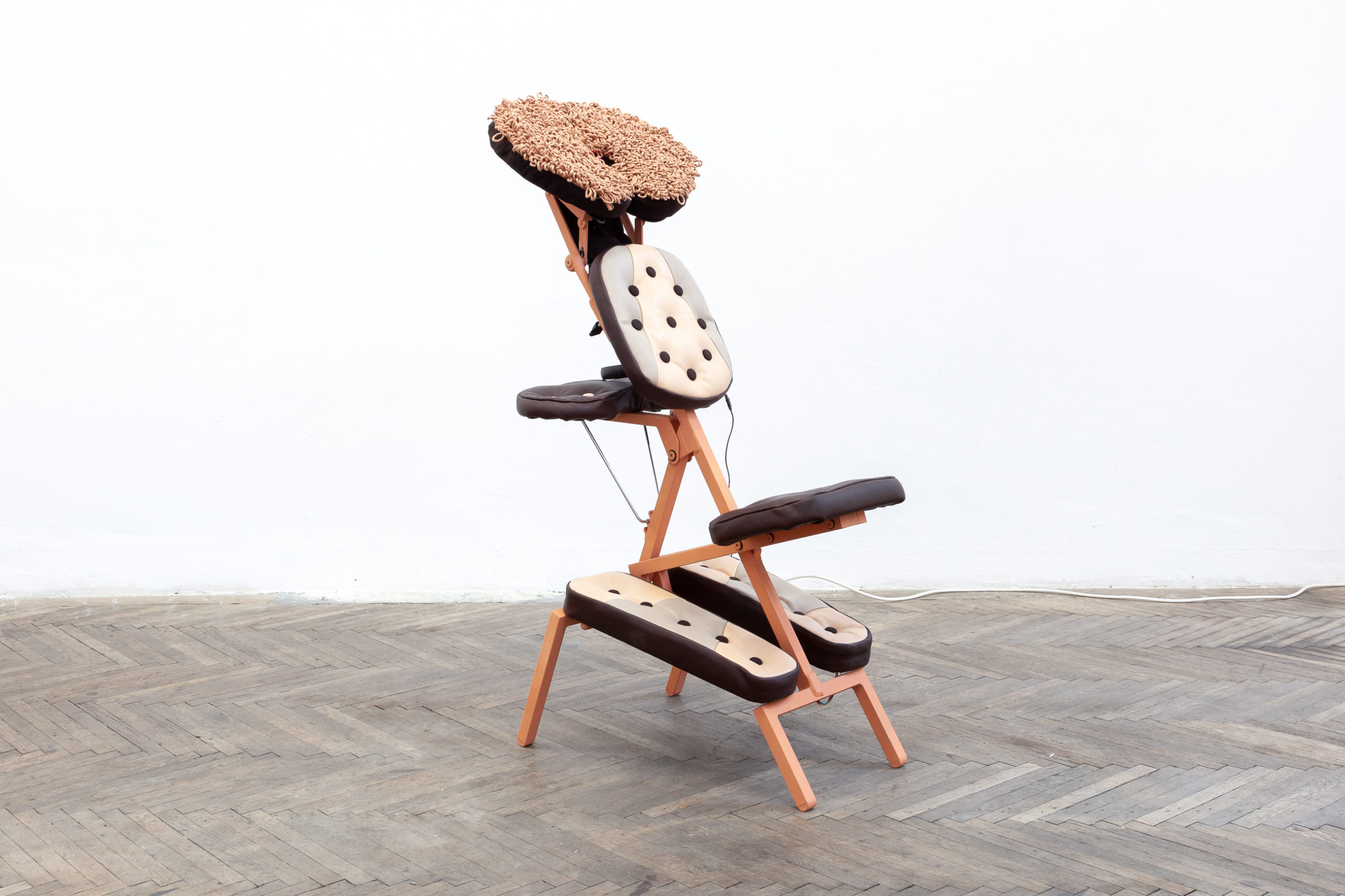Audiovisual tactile installation, 60 x 100 x 120 cm. Leather, textile, foam, metal, ceramics, electronics, microcontroller, leds, vibration motor headphones, Sound (Stereo). Credits: Programming and PCB Design: Daniel Schatzmayr Textile Design: Erika Farina
It is undeniable the impact technology has over humans, shaping not just our actions, our intellectual, and our body, but also our emotions, our desires, and our relationships. The proliferation of interactive digital screens, acting as mediators for our work, our social engagements, and our personal interactions, fosters a standardised and conventional user experience, wherein sight takes precedence as the primary sensory mode.
In response to this, Patrícia J. Reis interactive artworks disrupt conventional modes of perception, prompting the human perceptual apparatus to engage in unexpected ways. The audiovisual tactile illusions elicited by the interactive pieces stem from what the artist refers to as a "glitch" in the human sensorium , made possible only through technological advancements. Flickering light, binaural beats, and continuous vibrations—phenomena absent in nature—are artificially generated through technology in her Massage chairs Love series.
Participants are encouraged to relax and engage with the sensory-rich experience offered by the interactive installation. Seated comfortably in specially adjustable chairs, they are enveloped in an immersive audiovisual tactile environment . The visual interface emanates flickering light patterns , while the audio interface plays a mix of pop music infused with subtle binaural beats . Embedded within the chair's upholstery, tactile interfaces emit gentle vibrations , emphasising the tactile dimension of the experience. The rhythm of this multi-sensory simulation is synchronised in such a way that – even with your eyes closed – moving geometrical patterns appear in colour as a “brain image”. It ignores our visual perception (which is often the most dominant) and emphasises how we can form an image of the world through our other senses.
To interact with the installation, participants are invited to touch a custom-designed ceramic sensor , seamlessly integrated into the chair's structure and serving as a tactile interface. Adorned with delicately crafted gold lustre , the sensor acts as a capacitive touchpad, enabling users to trigger different modes and frequencies of light and sound by simply touching the three distinct lines. The gold usually used in porcelain crafts is here transformed and “urban-mined" into an electronic sensor. In a high-speed mode (30Hz), additional vibrations are introduced, synchronising with the audiovisual cues to augment the immersive multi-sensory illusion.
The audio tracks featured in the Love series are remixes of well-known pop songs from the 80’s and 90’s depicting love as a commodity. These songs allude to erotic, sexual, and casual encounters, contrasting with the ideals of romantic and genuine love. These were incorporated to make a critique of the impact of technology on love within our contemporary neoliberal and digital culture. Just as mass media culture in the 80s and 90s commodified love, promoting material consumerism, today, dating apps play a similar role: they mediate and promote digital consumerism, turning everyday human dating practices into commodities. Its is undoubtedly that our daily engagements with technology have changed the way we love, fostering a desire for instant gratification akin to the swipe of a screen. These interactions have shifted our understanding of love further from its true essence, rooted in care and genuine connection. Perhaps the type of instant love we yearn for, cant be gratified through human relationships anymore, but rather, it finds greater fulfilment through machine interaction? Can machines help us discovering a new form of love? This installation speculates on the possibility of future love interactions between humans and machines driven less by intellectual and social constructs, and more by sensations, intuitions, and emotions — a future responsive post-anthropocentric love across species and differences.
The tracks remixes are subtle, devoid of lyrics, and only the most observant can discern their origin. They are based in the following pop songs:
“What's love got to do with it” by Tina Turner (1984)
“Physical” by Olivia Newton-John (1981)
“Fastlove” by George Michael (1996)
All components of the installation, including the massage chairs, have been repurposed and up-cycled, with the upholstery crafted from leftover leather materials. Furthermore, the hardware and software driving the experience are built upon open-source technology, reflecting our commitment to accessibility and sustainability in art and technology.
- Categories:
- Share Project :
